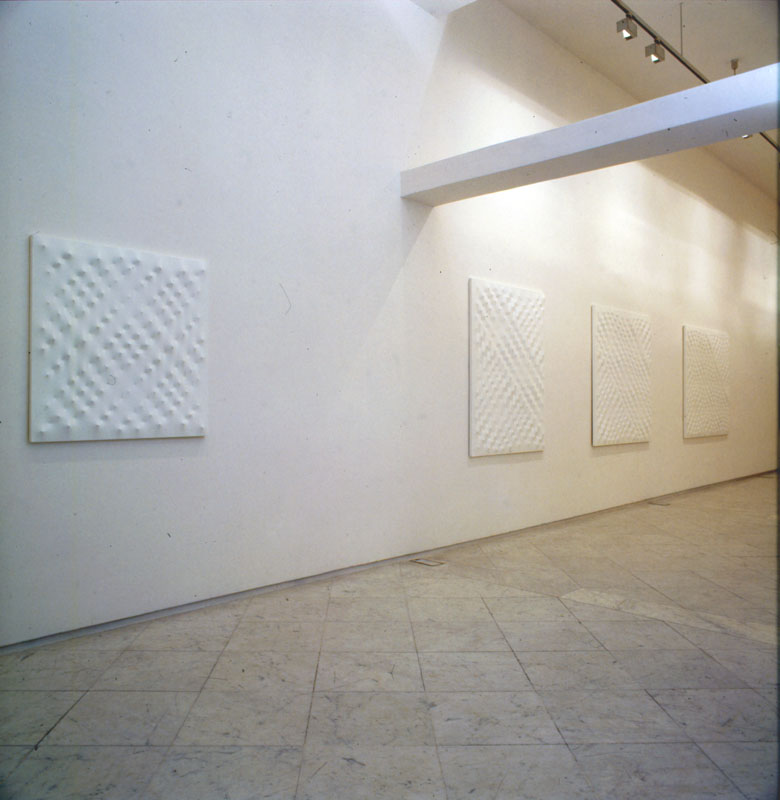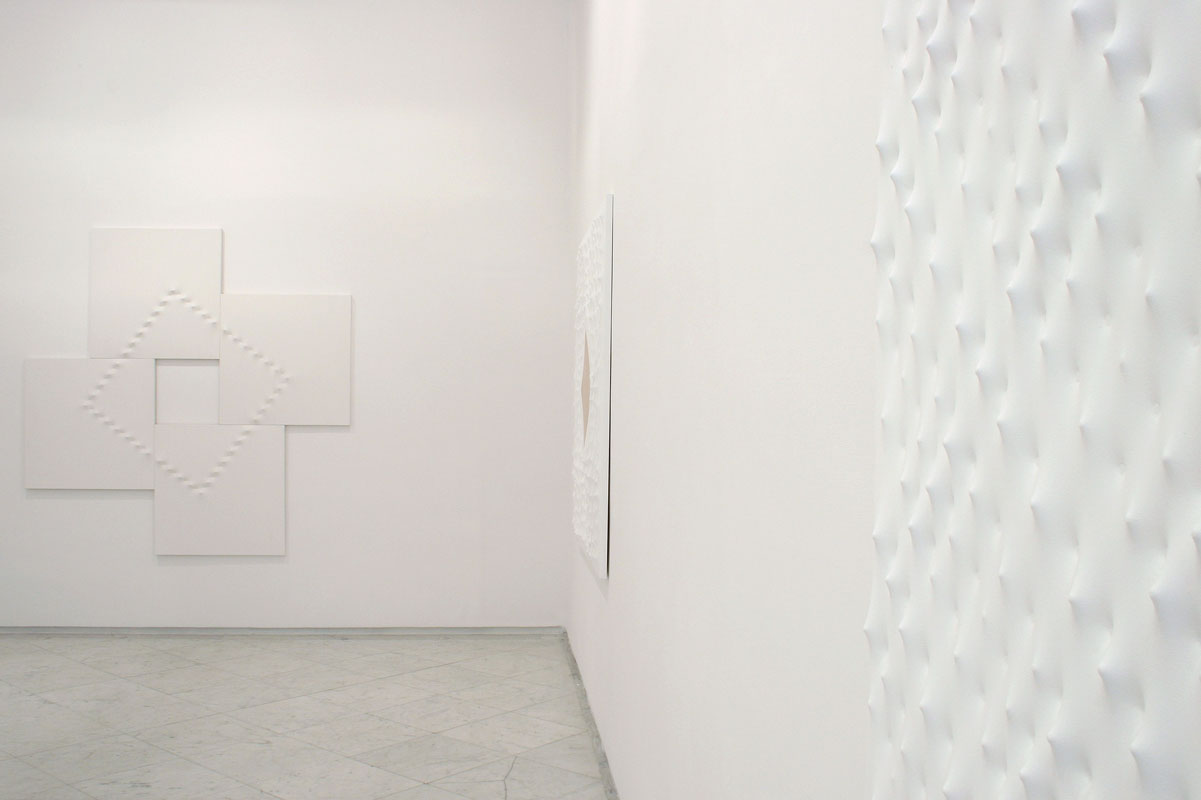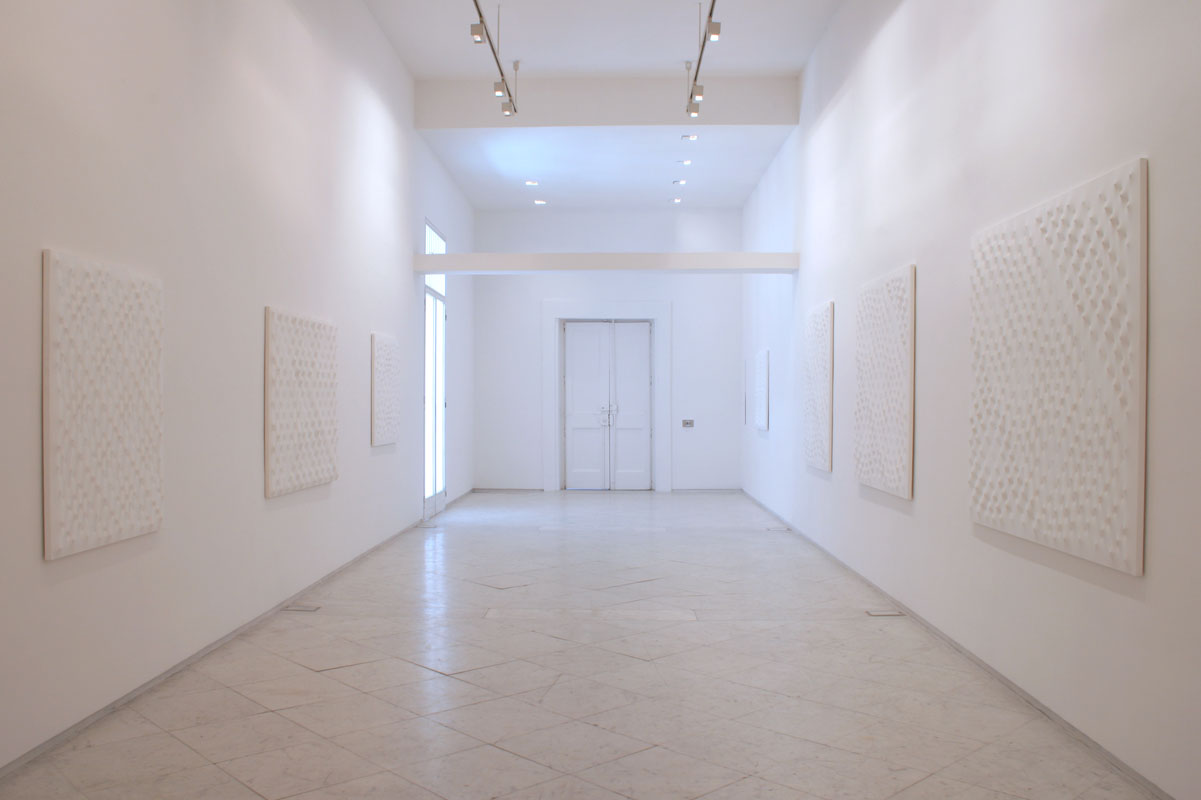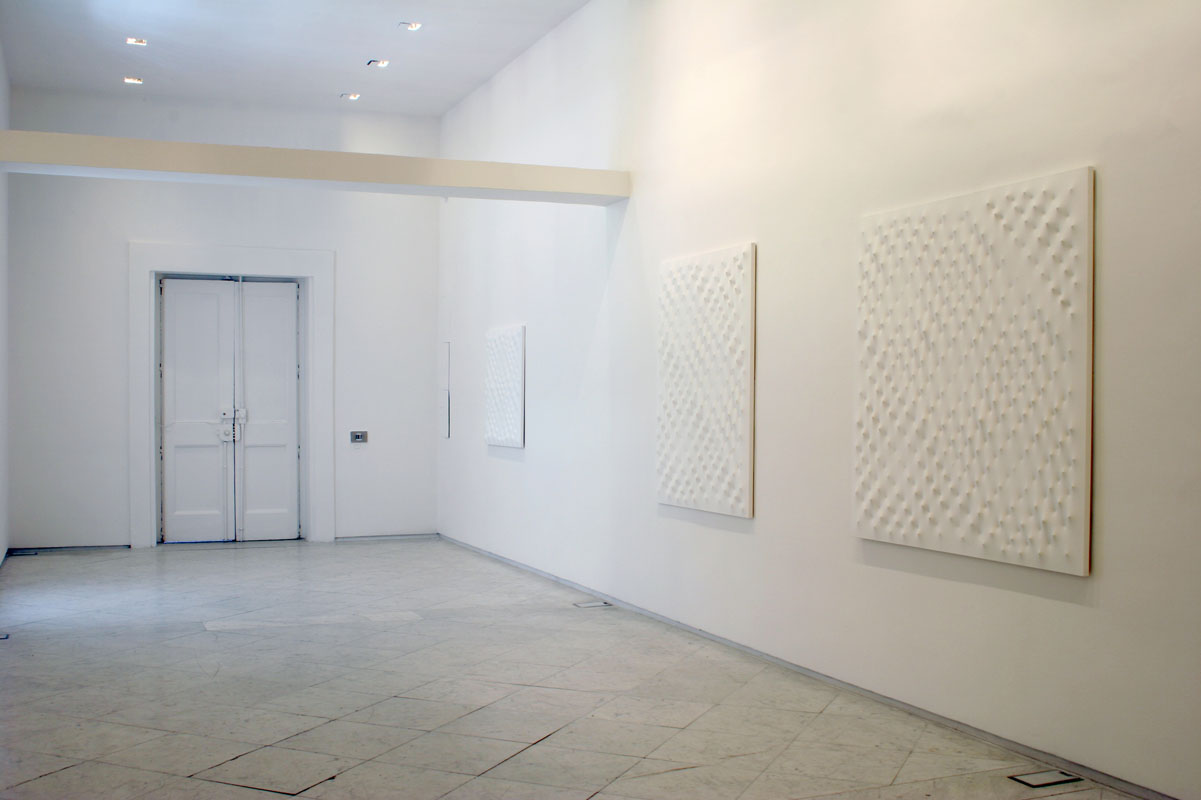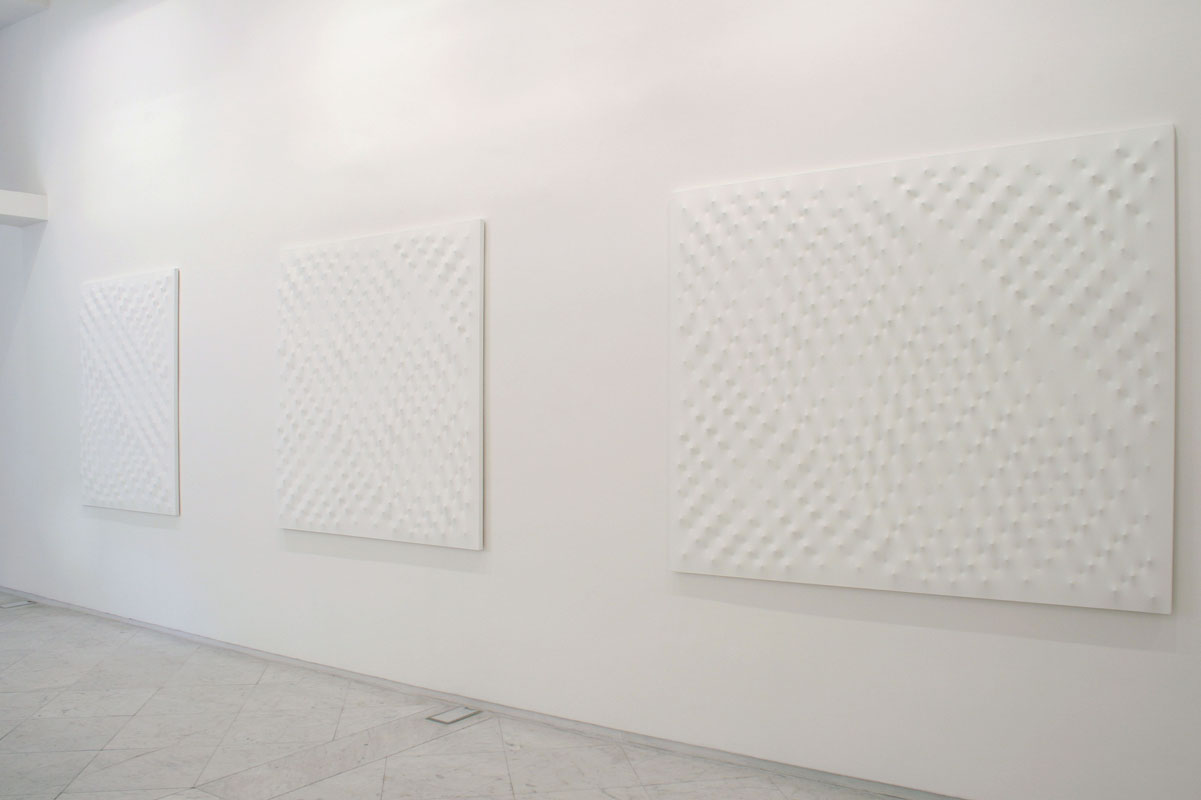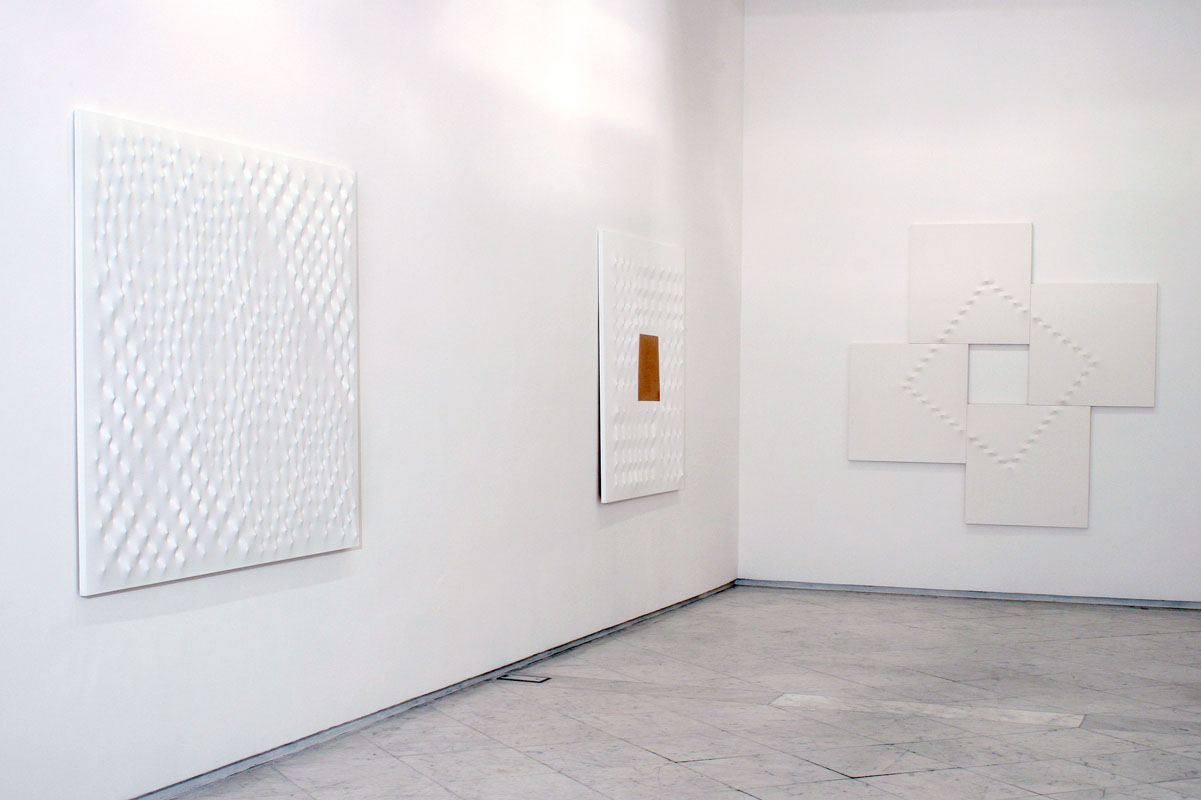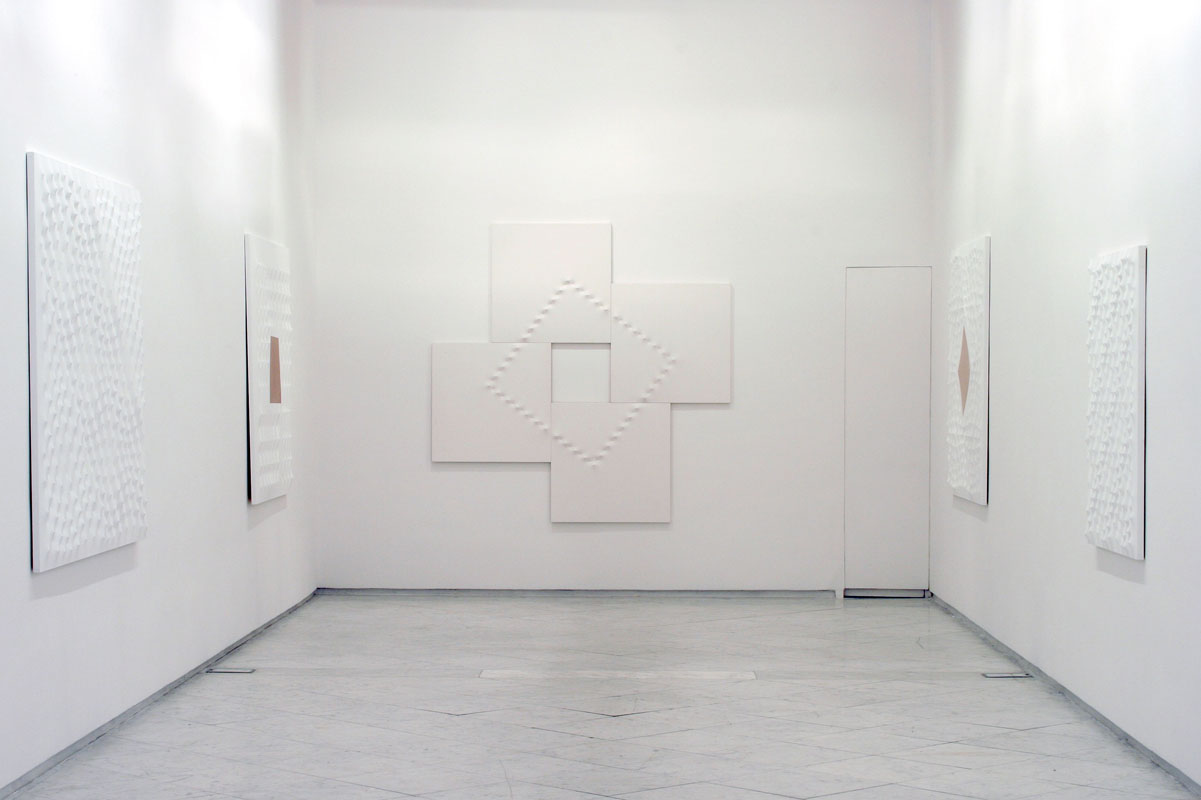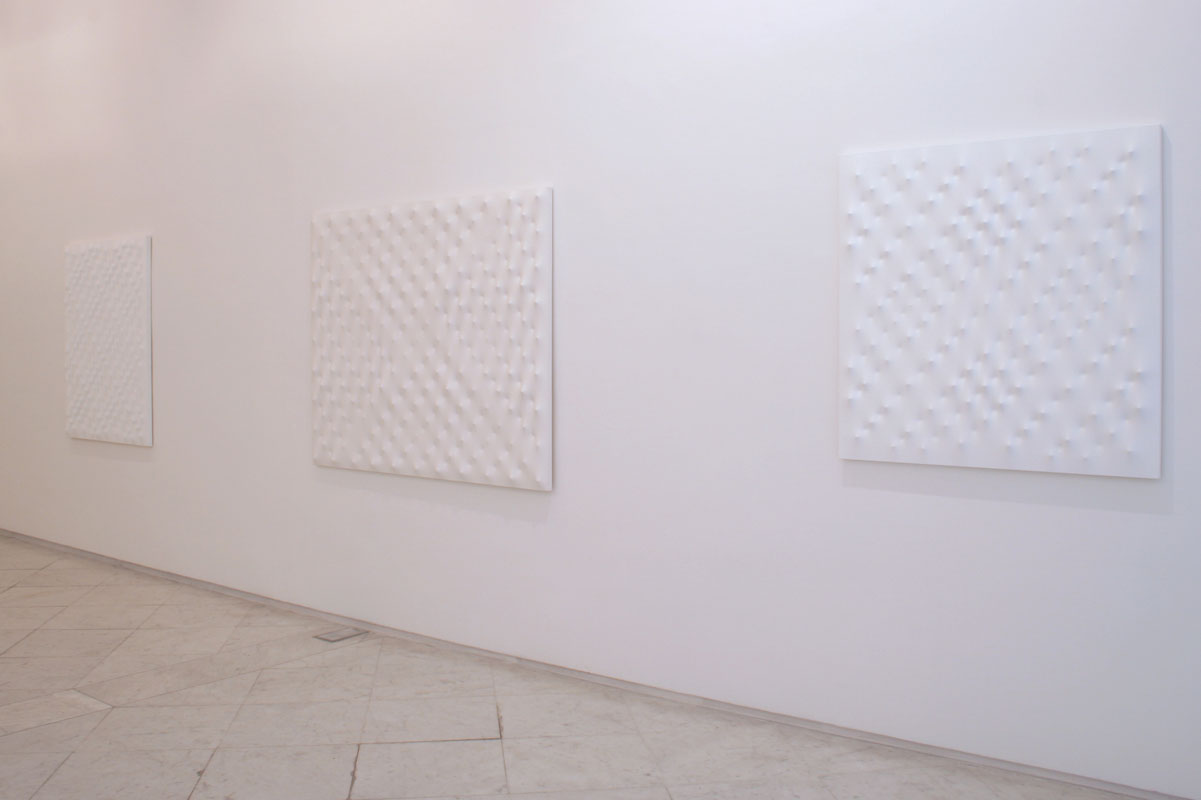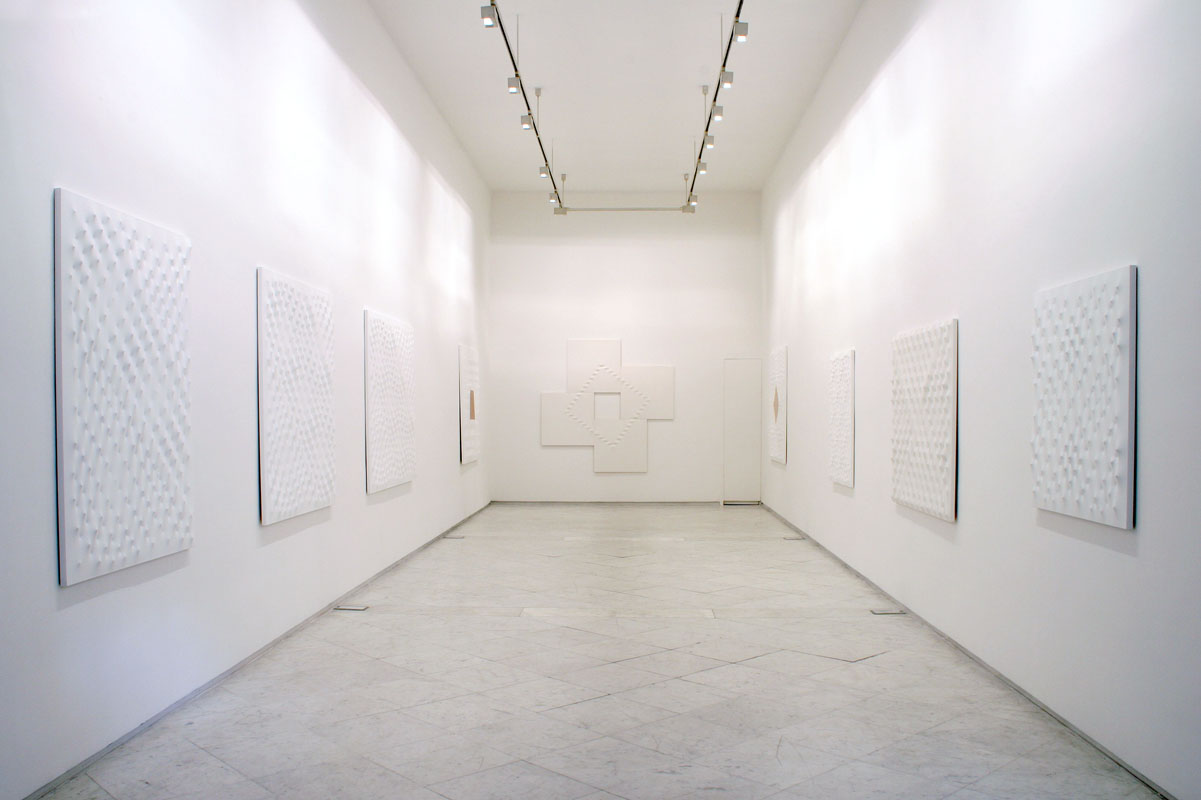The relationship between space, light, and form lies at the heart of the work of Enrico Castellani, the protagonist of a one-man exhibition at the Lia Rumma Gallery in Naples.
The works in the exhibition have almost all been done in 2006, except for Composizione bianca (White Composition), first conceived in 1999. This work can be considered a sort of starting point from which all his later work has developed. The module around which the work is structured is the square. The four white square canvases fit inside each other, forming a rotary motion and leaving a small empty square at the center. The smooth surface of the canvases is broken by a lozenge formed by the protuberance of the nails, placed at the back of the four canvases. In this way, Castellani singles out and isolates a portion of space, respecting a precise geometric rigor and leads us to reflect on our perception and the categories that we apply to things. Indeed, the lozenge can be considered to be a square arranged diagonally.
This same process of isolation can also be found in the other works on display. In some cases, single portions of space are flattened and interrupt the rhythmic alteration of the surface, due to the protuberance of the nails. From the beginning of his career in the fifties until today, Enrico Castellani’s work has maintained its extreme rigor and has demonstrated a coherent line of continuity. The picture should no longer be considered the site of artistic fiction but represents an autonomous material. The solution he adopts focuses on the object and involves the construction of a sort of rib made of nails, placed at the back of the canvas. In this way, the pressure bends the material, creating a discontinuous bulge on the structure. The artist’s investigation, therefore, focuses on the essence of pictorial practice and concentrates on the main components that determine its developments. His artistic language uses the bare essentials, made up of surfaces and non-colors. His work sets out and resolves the question of the rendering of another dimension, with respect to the spatial limits of the canvas. His works become vibrant organisms upon which light moves, hesitates, stops, and eventually creates infinite shadows.


